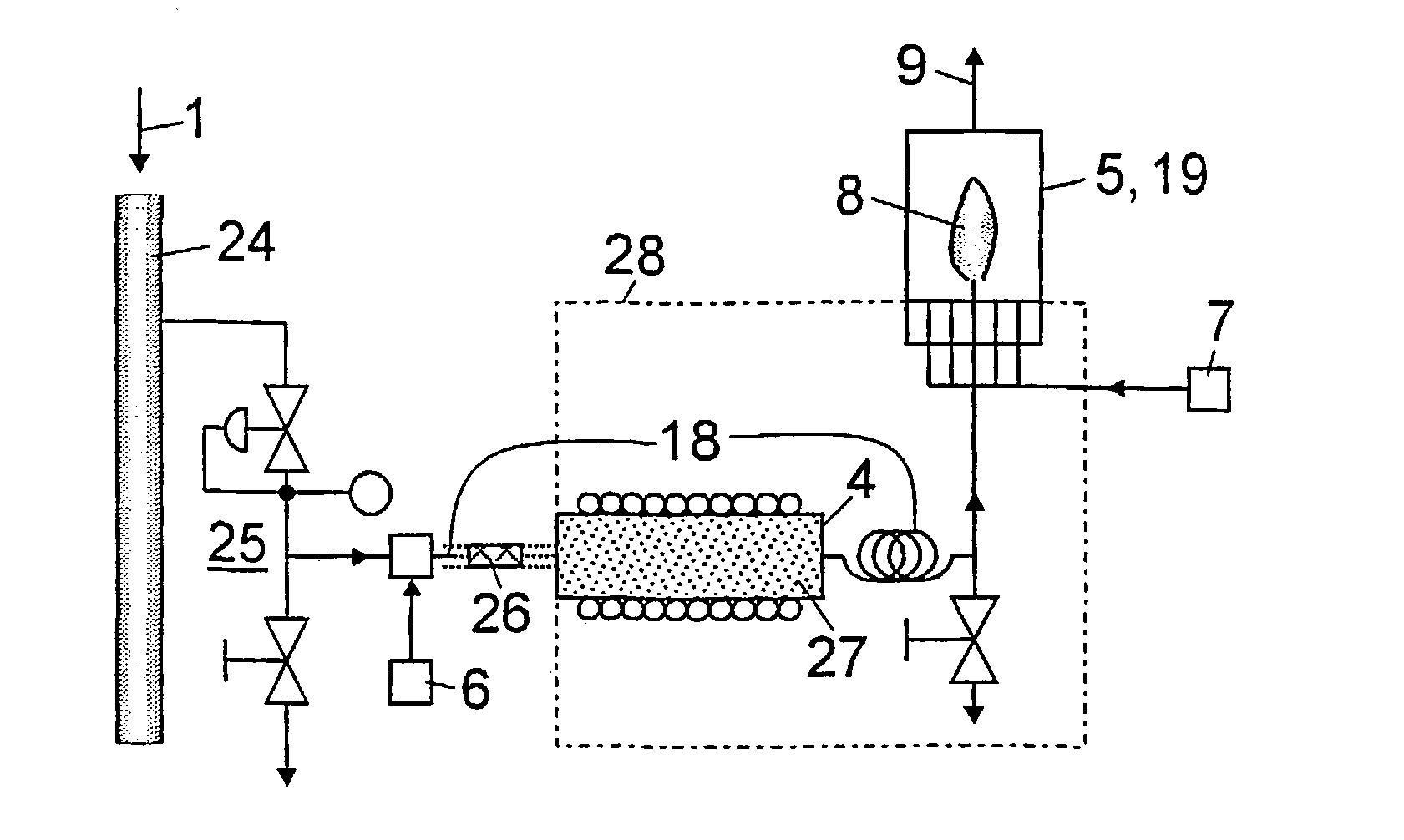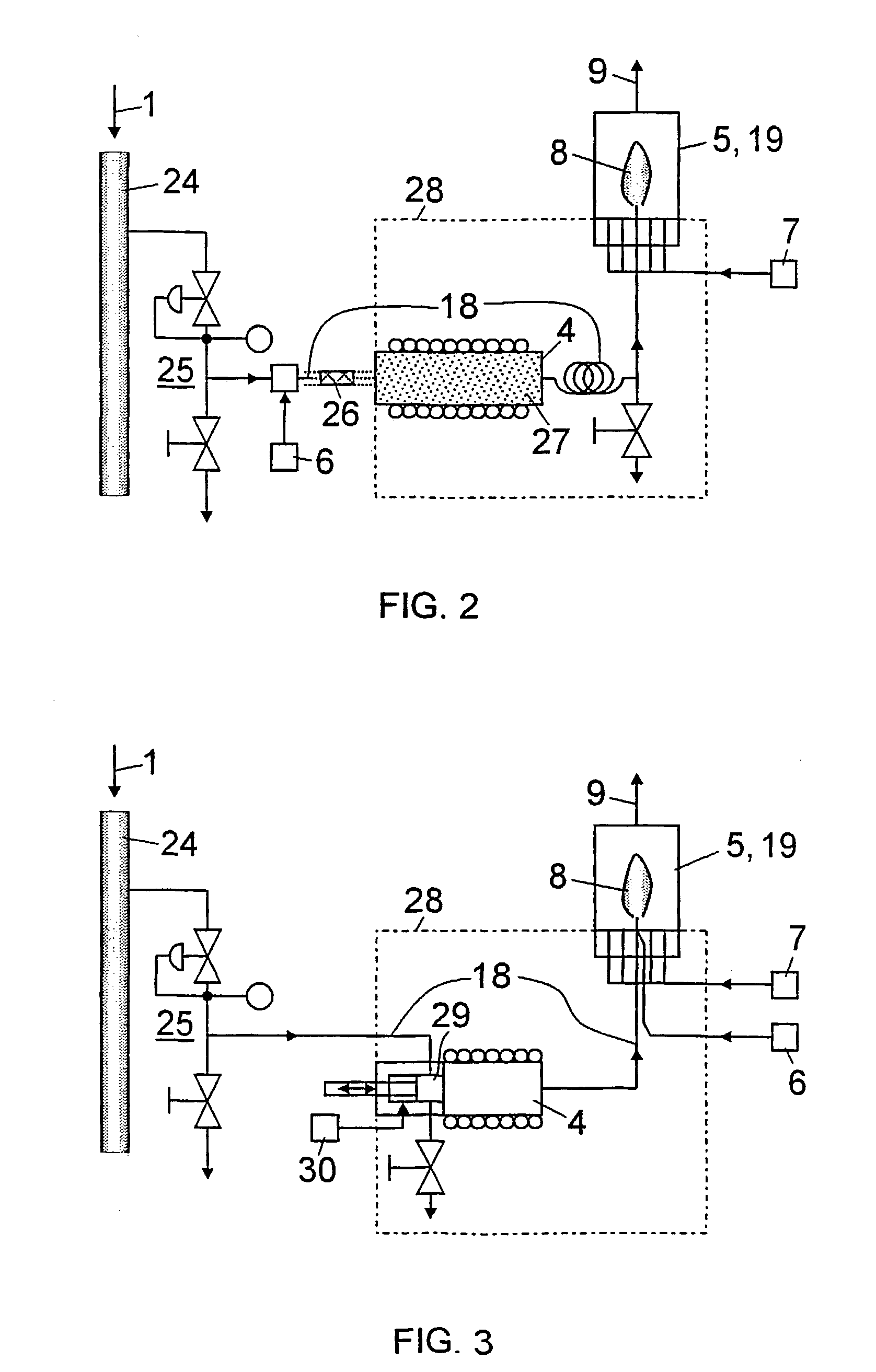System for determining total sulfur content
- Summary
- Abstract
- Description
- Claims
- Application Information
AI Technical Summary
Benefits of technology
Problems solved by technology
Method used
Image
Examples
Embodiment Construction
as well as of advantages and preferred embodiments thereof is provided, with reference to the drawing figures in which:
[0012] FIG. 1 is an exemplary embodiment of a system according to the invention for determining the total sulfur content of a sample,
[0013] FIG. 2 is an example of continuous vaporization of the sample and its subsequent combustion in a flame, and
[0014] FIG. 3 is an example of discontinuous vaporization of the sample and its subsequent combustion.
[0015] A liquid sample 1, which is to be examined for its total sulfur content, e.g. gasoline, is transported from a sample container 2 to a sample vaporizer 4 by means of pressurized gas 3. The vaporized sample 1 is subsequently fed to an enclosed burner 5 where it is combusted in a flame 8 with the supply of hydrogen 6 and air 7. In this process, the sulfur compounds of sample 1 are substantially converted into sulfur dioxide. The gaseous combustion products 9 of the sample 1, i.e. the sulfur dioxide as well as carbon dio...
PUM
 Login to View More
Login to View More Abstract
Description
Claims
Application Information
 Login to View More
Login to View More - R&D
- Intellectual Property
- Life Sciences
- Materials
- Tech Scout
- Unparalleled Data Quality
- Higher Quality Content
- 60% Fewer Hallucinations
Browse by: Latest US Patents, China's latest patents, Technical Efficacy Thesaurus, Application Domain, Technology Topic, Popular Technical Reports.
© 2025 PatSnap. All rights reserved.Legal|Privacy policy|Modern Slavery Act Transparency Statement|Sitemap|About US| Contact US: help@patsnap.com



